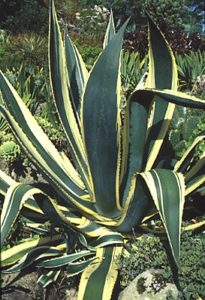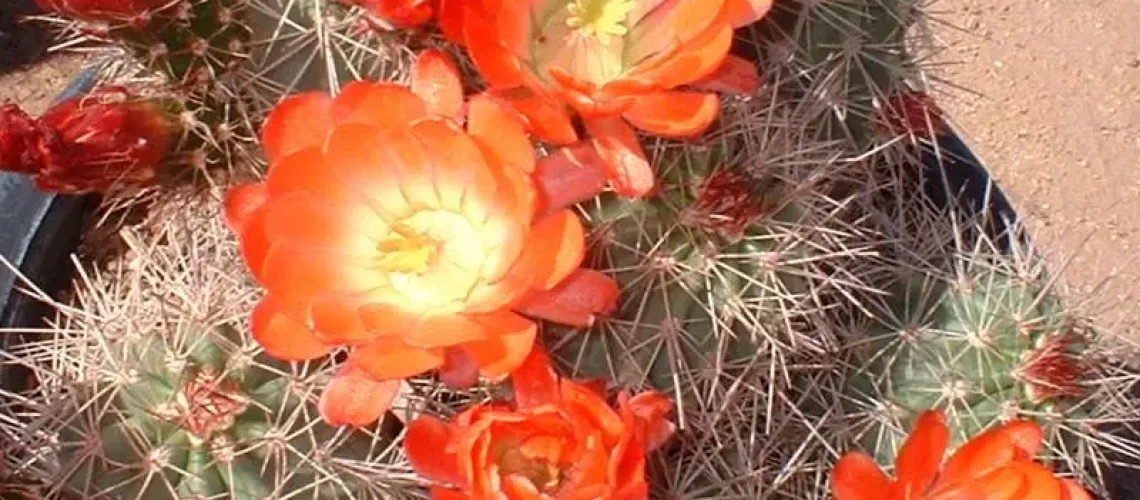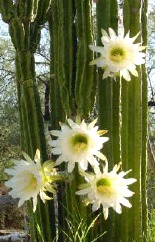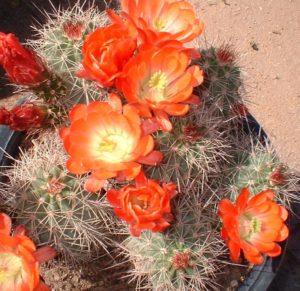Before Colorado settlers imported the shrubs and trees that now forest the Front Range, nature’s garden included abundant cacti. These indigenous landscape plants are well suited to the high desert plateau we call home. Indeed, cacti are native only to the Western Hemisphere! Most of us, however, overlook the sculptural value cacti provide when interspersed with low-growing ground covers, native grasses and wildflowers.
These exotic heritage plants work naturally in any garden setting
Colorado cacti range from low growing, like barrel and hedgehog cactus, to “shrub” forms such as the prickly pear and taller columnar cactus such as the Trichocereus species. Other popular succulents such as aloes, agaves and chollas are not true cacti, but make similar structural statements in the garden and are xeriphytic (use little water). The native Yucca is neither a cactus nor succulent, but is a perfect companion plant in the low-water environment.
The obvious advantage of cacti is their low water/high sun requirements. A quintessential xeriscape plant, they provide texture and interesting form among other traditional low-water perennials. They are happy with the 15 inches of rainfall we usually receive and like at least 4-6 hours of direct sun and well-drained soils.
Cactus Facts:
- All cacti are succulents but not all succulents are cacti. A succulent is any plant that can store moisture in its stems, leaves or roots. Many of Colorado’s xeriphytic natives are succulents, such as sempervivums, agave, ice plant, and sedums. Cacti are identified by their aeroles which develop into spines or flowers.
- Soil conditions are most important and will most directly influence the health of your cactus. Soils must be well drained and must not support standing water after rain or irrigation. Cacti like a sandy soil, but be careful with the clay soils along the front Range and add plenty of organic matter along with sand to avoid creating impermeable adobe!
- Cacti get thirsty too, so be sure they are receiving at least 15 to 16 inches of rain per year. If your plant looks wrinkly, soft or withered in summer, it is asking for a drink. Water only June – August when the soil is dry and no rain is forecast. In the fall, your winter-hardy cacti will begin to decrease water storage in anticipation of freezes and may look dry, limp and brown. Don’t worry – they’ll be back next spring.
Landscaping with Cacti and Succulents:
Location, location, location…
Rock gardens, xeriscape beds and hot, dry marginal areas are all great for our low-water friends. If mixing with other plants, make sure your cactus does not get over watered, however. And notice if there is a lot of reflective light, like from the south side of a building. That may be too much even for a desert dweller!
Careful, they bite!
Be sure to plant cacti away from main thoroughfares in your yard. Kids and dogs are not likely to pay much attention until they get a few painful reminders. Even grownups may prick their ankles if the plant is too close to the walkway.
A wide, shallow root base…
means cacti and succulents are less “grounded” than their herbaceous friends. Even a small barrel cactus may have a root system that extends out a foot on all side, but is only a few inches deep. They can be easily crowded out by more aggressive plants, and it is best not to disturb the soil around them. Fortunately, these are typical factors in a low-water garden so most cacti aficionados have few problems with this.
Pest free!
 Cacti tend to be pest and disease free. Rot can occur with over watering, and physical damage from hail, humans and animals can occur. Fortunately, cacti are easily propagated, so if your favorite gets damage or rot, you can take cuttings from the healthy part of the plant and grow it all over again!
Cacti tend to be pest and disease free. Rot can occur with over watering, and physical damage from hail, humans and animals can occur. Fortunately, cacti are easily propagated, so if your favorite gets damage or rot, you can take cuttings from the healthy part of the plant and grow it all over again!
Most landscape nurseries carry a variety of cacti and succulents for the Colorado landscape. They come potted, so take care of both your fingers and their roots as you transfer to your garden. Early spring is the best time to establish a cactus plant so it can firmly root before the summer sun and heat. After the first year it will reward you each March with bright cactus blossoms. Enjoy!
Boulder Landscape and Design can design and install succulent xeriscapes for your landscape. We specialize in low-water usage designs for the Colorado environment.











